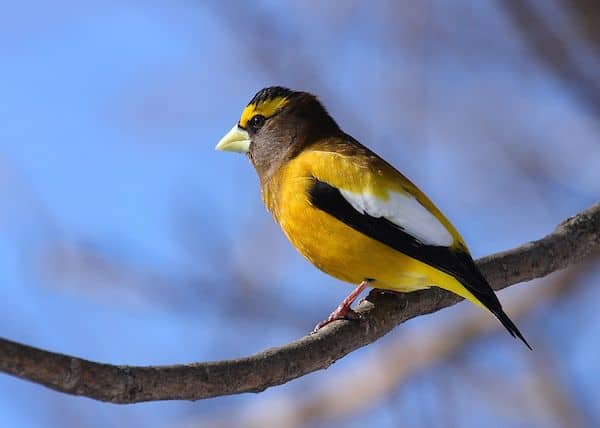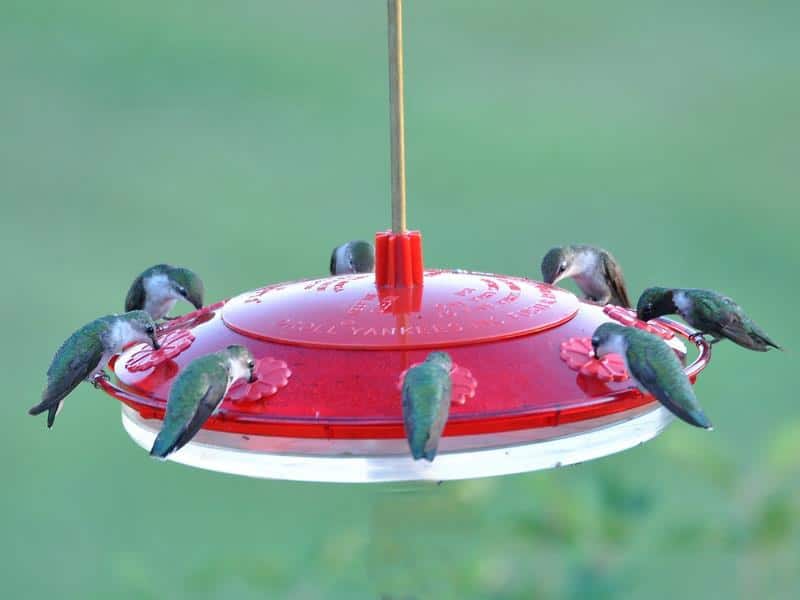Cape Romain National Wildlife Refuge
Exceptional coastal habitat including undisturbed barrier islands, salt marsh habitat, secluded beaches, and maritime forests. The 337 bird species observed here include a variety of nesting species such as American oystercatcher, Wilson’s plover, royal tern, and painted bunting. This 64,229-acre wildlife refuge also supports the largest known nesting rookery of brown pelicans, gulls, and terns in South Carolina. The best times to visit are spring, fall, and winter. Access to the popular Bull’s Island is by boat and visitors should contact the Sewee Visitor and Environmental Education Center for information at 5801 Highway 17 North Awendaw, South Carolina 29429 or call (843) 928-3803.
Savannah National Wildlife Refuge
An extensive landscape of freshwater marshes, creeks, and forested habitat, including significant bottomland hardwoods. This wildlife refuge also contains many acres of managed freshwater impoundments that support large populations of migratory waterfowl in winter. Notable birds found here include northern pintail, green-winged teal, northern shoveler, purple gallinule, sedge wren, and orange-crowned warbler. The best times to visit are spring, fall, and winter. For information contact Savannah Coastal Refuges Parkway Business Center 1000 Business Center Drive, Suite 10 Savannah, Georgia 31405 or phone (912) 652-4415.
Bear Island Wildlife Management Area
Located in the heart of the ACE Basin in Colleton County, where the rivers Ashepoo, Combahee, and Edisto join, contains some of the best quality freshwater wetlands habitat in South Carolina. This state-managed property consists of 12,000 acres of managed wetlands, tidal marshes and forested habitat. Notable birds found here include mottled duck, wood stork, great horned owl, and black-necked stilt. The best times to visit are late winter and spring, and public visitation is allowed from mid-January through late October. Visitors should contact the South Carolina Department of Natural Resources prior to their visit at 585 Donnelley Drive, Green Pond, South Carolina 29446 or call (843) 844-8957.
Huntington Beach State Park
A diverse landscape of freshwater ponds, salt marshes, forests, dune fields, and beaches. Considered by some to be the finest birding destination in South Carolina, this popular state park draws bird watchers year-round. Favorite destinations include the jetty, beach tidal flats, and Mullet Pond. Notable birds found here include long-tailed duck, least tern, purple sandpiper, sharp-tailed sparrow, and a regularly occurring host of rarities. Birding is generally good year-round. For information contact Huntington Beach State Park at 16148 Ocean Highway in Murrell’s Inlet, South Carolina, 29576 or phone (843) 237-4440.
Santee National Wildlife Refuge
A well-managed system of significant wetlands, open water, and upland habitat. This wildlife refuge, located along the shores of Lake Marion in the inner coastal plain, provides important wintering habitat for significant numbers of migratory waterfowl and other species. Birds found here include greater white-fronted goose, tundra swan, bald eagle, and yellow rail. The best times to visit are spring, fall, and winter. Visitors should contact Santee National Wildlife Refuge at 2125 Fort Watson Road, Summerton, South Carolina 29148 or call (803) 478-2217.
Congaree National Park
Here is the largest remaining stand of contiguous old-growth bottomland hardwood trees in the United States. Located along the banks of the Congaree River, this scenic 22,000-acre national park protects giant, record-sized trees, ecologically significant floodplain habitat, and upland pine forests. Notable birds found here include Mississippi kite, barred owl, prothonotary warbler, and Swainson’s warbler. Trails and elevated boardwalks give visitors the opportunity to explore this important natural area. The best times to visit are spring and fall, and visitors should contact Congaree National Park at 100 National Park Road, Hopkins, South Carolina 29061 or phone (803) 776-4396.
Carolina Sandhills National Wildlife Refuge
Located in the Sandhills region of the South Carolina inner coastal plain, this refuge contains one of the most exceptional examples of longleaf pine/wiregrass ecosystems in the southeastern United States. Bird species found here include wood duck, red-cockaded woodpecker, brown-headed nuthatch, and summer tanager. The wildlife refuge’s auto tour allows visitors a good opportunity to explore this rare habitat, with numerous interesting stops along the way. Best time to visit is spring and fall. Visitor information can be obtained from Carolina Sandhills National Wildlife Refuge at Highway 1, McBee, South Carolina 23734 or by phoning (843) 335-8401.
Landsford Canal State Park
A unique combination of historic and natural landscape features along the scenic shores of the Catawba River. This state park highlights significant bottomland hardwood habitat and river bluffs that attract and support an impressive array of migrating neotropical songbirds and wildflower communities. Outstanding populations of rocky shoals spider lily also occur in the river. Land conservation groups, particularly Katawba Valley Land Trust, have through cooperative effort made great strides in protecting important natural habitat and public access along this river corridor. Notable birds found here include nesting bald eagles, osprey, Acadian flycatcher, yellow-throated warbler, and Louisiana waterthrush. The best time to visit is during songbird migration in spring. For information contact Landsford Canal State Park at 2051 Park Drive, Catawba, South Carolina 29704 or phone (803) 789-5800.
The Walhalla State Fish Hatchery
Located in the mountains of Oconee County, this site contains an impressive mixture of mature pine/hardwood forest habitat. A variety of peripheral breeding birds, unusual for South Carolina, occurs here including golden-crowned kinglet and red-breasted nuthatch, as well as other mountain birds such as black-throated green warbler and worm-eating warbler. The best times to visit are spring and fall. For information contact Walhalla Fish Hatchery at SC 107, Walhalla, South Carolina 29635 or call (864) 638-2866.
Caesars Head State Park
Along with Jones Gap, this state park makes up a significant part of the Mountain Bridge Wilderness Area. This 10,000-acre wilderness area contains pristine waterfalls, more than 50 miles of walking trails, and majestic panoramic views of the Blue Ridge Mountain landscape. Notable birds found here include uncommon South Carolina nesters such as common raven, ruffed grouse, black-throated blue warbler, scarlet tanager, and red crossbill. An established hawk-watch site is also active during fall. The best times to visit are spring, summer, and fall. For information contact Caesars Head State Park at 8155 Geer Highway, Cleveland, South Carolina 29635 or call (864) 836-6115.




